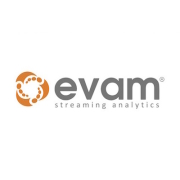Streaming Analytics processes and analyzes data continuously as it is generated, enabling businesses to derive insights in real-time. The solution empowers organizations to make immediate data-driven decisions and respond swiftly to dynamic market conditions.
This technology handles vast amounts of data in motion and offers a platform for continuous computation of results using that data. Designed for time-sensitive business operations, it supports use cases such as fraud detection, predictive maintenance, and personalized customer experiences. Enterprises benefit from enhanced operational efficiencies and competitive advantage through its implementation.
What are the critical features of Streaming Analytics?Industries like finance, telecommunications, and retail deploy Streaming Analytics to gain actionable insights and detect potential issues before they escalate. These sectors benefit significantly from the solution's ability to process high-frequency data with precision. It is also used in manufacturing for monitoring equipment and maintaining optimal performance through predictive analytics.
Organizations gain a competitive advantage, improved customer experiences, and greater efficiency by using Streaming Analytics. This technology allows for quick adaptation to changes, promoting better business outcomes and sustained growth.
| Product | Market Share (%) |
|---|---|
| Apache Flink | 14.8% |
| Databricks | 12.5% |
| Confluent | 8.5% |
| Other | 64.2% |

















































Streaming analytics gives companies the ability to analyze data as soon as it becomes available. With immediate real-time data at their fingertips, businesses can identify new revenue streams, resulting in an increase in profits. Other advantages include new customers, improved customer service, and also a way to analyze risks before they even occur. Because data is processed before it even lands in a database, streaming analytics supports much faster decision-making than using traditional data analytics technologies. Streaming analytics also guarantees security protection by detecting threat patterns and their risks, since it provides security monitoring of network and physical assets. By using real-time analytics, organizations can both predict and detect significant business events the moment they occur, making it possible to minimize risk while simultaneously maximizing gains.
As big and fast data proliferates and more data streams are generated, companies are relying on real-time analytics more and more. Real-time data monitors any number of event streams and event data of any kind, allowing for a quick response to events at the very moment they happen - or even sooner when using predictive models.
For companies, real-time analytics can help businesses comprehend what’s happening across their business units, improve the relationship between sales and marketing, enhance workflows, understand customer behavior, and much more. Real-time data can be used for nearly every type of business and industry ranging from financial services, healthcare, information technology, advertising, and transportation.
Streaming Analytics provides you with instant insights into your data as it flows in real-time. This allows businesses to make informed decisions quickly, increasing their ability to respond to market demands and customer preferences effectively. By processing data as it arrives, you reduce latency and achieve faster, more accurate decision-making processes.
What are the benefits of integrating AI with Streaming Analytics?Integrating AI with Streaming Analytics enhances the ability to analyze large volumes of data efficiently. With AI, you can apply machine learning algorithms on real-time data streams, offering predictive analytics and anomaly detection. This helps you uncover patterns and insights that are not possible with traditional analytics, leading to smarter business strategies and improved operational efficiencies.
How can Streaming Analytics enhance customer experience?Streaming Analytics allows you to analyze customer interactions as they happen, enabling personalized and timely customer experiences. By leveraging real-time data, you can tailor your services and products to fit individual customer needs, enhance customer satisfaction, and build stronger brand loyalty by delivering relevant recommendations and solutions instantly.
What industries benefit the most from Streaming Analytics?Industries such as finance, healthcare, telecom, and retail are prime beneficiaries of Streaming Analytics. In finance, real-time analytics help in fraud detection and risk management. Healthcare industry uses it for patient monitoring and operational efficiency. Telecom benefits from network optimization and customer experience improvements, while retail uses it for dynamic pricing and inventory management.
What challenges do businesses face when implementing Streaming Analytics?Implementing Streaming Analytics can be challenging due to the need for high-speed data processing capabilities and infrastructure investment. There is also a complexity in integrating with existing systems and managing the volume of data. Additionally, ensuring data security and privacy is a concern, alongside requiring skilled personnel to manage and analyze the streaming data effectively.